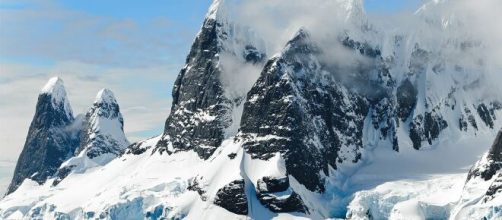Researchers in the United Kingdom have used computer modeling to determine the rate of coastal ice melting in the Arctic seas. According to a new study, rapid melting will open up new places for oil and gas production in the Arctic, but at the same time, will increase the number of natural disasters in other regions. These are the results of a new study conducted by experts from University College London. The results of the scientific work are published in the scientific journal The Cryosphere.
The last time, according to The Guardian, calculations of sea ice thickness were carried out by Soviet expeditions between 1954 and 1991.
At that time, a map of the snowiness of the Arctic was used to establish the thickness of the ice. In addition, they calculated the pressure of snow on the ice floe, which lowers the ice floe. At the moment, as noted by scientists, the figures taken from the map are no longer relevant and are very outdated because of global warming.
Calculations are now being made by immersing ice in the water. It has been found that ice in coastal sea regions melts 70-100% faster than previously thought. In addition, thin ice can melt quickly during the Arctic summer. Under this condition, the ocean will begin to warm even in wintertime and increase the melting rate of glaciers.
Research details
Researchers used modern methods to calculate sea ice thickness.
Among them is a unique radar from the European Space Agency's CryoSat-2 satellite, which can calculate the time it takes for radar waves to reflect off the ice. Thanks to this, it is possible to calculate the height of the ice above the water and find out its total thickness. Another scientific method used was computer modeling, which allowed us to estimate the depth and density of the snow cover in different years, from 2002 to 2018.
By combining the data, British scientists estimated the overall rate of sea ice thickness in the Arctic. As a result, it turned out that the rate of melting in the coastal seas increased compared to previous calculations in the following way: in all seven coastal seas - by 58% on average; in the Laptev Sea - by 70%; in the Kara Sea - by 98%; in the Chukchi Sea - by 110%.
Consequences of the rapid melting of ice in the Arctic
According to the authors of the scientific paper, ice thickness determines the health of the Arctic. Thicker ice works like an insulating blanket: it keeps the ocean from heating the atmosphere in winter and protects it from the sun's rays in summer. However, due to the rapid melting of ice in the Arctic - the ocean will heat up even in winter and accelerate global warming. Changes in the Arctic also affect extreme weather conditions, including abnormal heat and flooding in the northern hemisphere.
However, there are positive consequences of the accelerated melting of the ice. In particular, the Northeast shipping lane from China to Europe will become shorter, resulting in lower carbon dioxide emissions. In addition, new sites for oil and gas production in the Arctic will become available.


